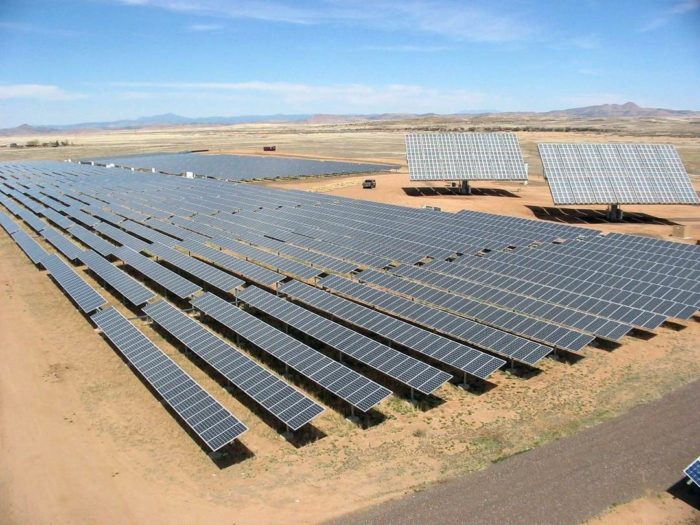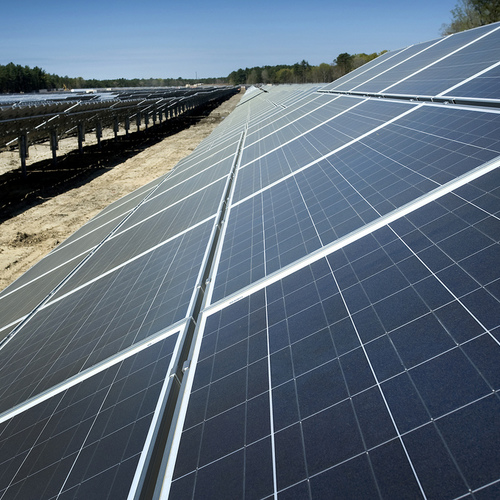
Image Credit: Arizona Public Service Company
The cost of solar and wind energy in western states of the U.S. will be cost competitive with natural gas by 2025 even without government subsidies, a report from the National Renewable Energy Laboratory suggests.
That finding was part of a larger study looking ahead to the renewable energy landscape in 2025, when renewable portfolio standard requirements in a number of western states culminate. Those requirements have helped expand the development of wind, solar, and geothermal sources, and researchers at NREL wondered what renewable energy sources were likely to remain undeveloped by then. They also examined the most likely scenarios for transmitting renewable power from one part of the region to another after 2025.
The report concludes that the two most likely destination markets for electricity from renewable sources were California, the Southwest, and the Pacific Northwest. Potential sources for this electricity include Wyoming, New Mexico, Montana, and Idaho.
The study didn’t include small-scale renewables, called “distributed generation” (DG). “This does not diminish the importance of DG as a long-term resource,” the report says. “Rather, it recognizes that DG and utility-scale renewables face different issues of comparable complexity and are best analyzed on their own merits separately.”
Estimating cost competitiveness
In addition to taking a state-to-state look at renewable potential in 2025, researchers wanted to compare the cost differences between renewable energy transmitted to a “destination market” with the cost of power from a natural gas turbine built locally.
Researchers didn’t make any assumptions about future federal or state renewable energy policies beyond current expiration dates, so their cost estimates don’t include either the production tax credit or the investment tax credit, the study says.
They concluded:
- Geothermal energy would be 12% to 35% more costly than natural gas in 2025, or $15 to $42 more per megawatt hour (MWh).
- Solar would be 1% to 19% higher than natural gas, or $1 to $31 more per MWh.
- The cost of wind energy would be in the range of 0% to 13% more than natural gas, or up to $16 more per MWh.
“The precedent is that emerging technologies built at scale, in the right places, and serving customers in several service areas and jurisdictions can achieve common social aims cost effectively and with less financial risk to the public,” the authors concluded.
But they added a “renaissance of regionalism for renewable power” would depend on several factors, including how states adapt their energy policies to a “less monolithic” energy sector, and how states balance the expansion of renewable energy beyond 2025 with other goals.
Weekly Newsletter
Get building science and energy efficiency advice, plus special offers, in your inbox.















0 Comments
Log in or create an account to post a comment.
Sign up Log in